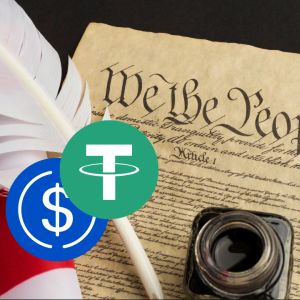The U.S. Securities and Exchange Commission (SEC) Crypto Task Force has begun considering whether staking should be allowed in crypto exchange-traded products (ETPs) after meeting with Jito Labs and Multicoin Capital on February 5, 2025. According to the meeting notes that were released today, the meeting focused on whether staking can be legally integrated into crypto ETFs and how it could function within regulatory frameworks. The SEC, which previously forced issuers to remove staking from Ethereum ETF applications, appears to be revisiting the issue following growing interest from firms looking to offer Solana-based ETFs and other staking-enabled products. “The attendees expect to address two main topics during the meeting: (i) the ability to include staking as a feature in exchange traded products (“ETPs”) and (ii) potential models for staking in certain cryptoasset ETPs,” said the notes. Staking is a core mechanism in PoS blockchains like Ethereum and Solana, where validators lock up tokens to secure the network and earn rewards in return. The proposed ETF structures would enable fund investors to benefit from staking yields while maintaining ETF liquidity and compliance with SEC rules. Jito Labs, Multicoin propose two staking models for ETFs Jito Labs CEO Lucas Bruder, Chief Legal Officer Rebecca Rettig, Multicoin Managing Partner Kyle Samani, and General Counsel Greg Xethalis laid out two potential approaches to incorporating staking into crypto ETFs. The first option is staking a portion of the fund’s assets through third-party validators, allowing ETFs to earn rewards while making sure there is enough liquidity for redemptions. The second model introduces liquid staking tokens (LSTs), where ETFs would hold staked versions of assets—such as JitoSOL for Solana—instead of the native tokens themselves. The SEC has a history of skepticism toward staking in ETFs. When asset managers initially applied for Ethereum ETFs, some included staking as a feature, but the SEC ordered them to remove it before approving the applications. The regulator cited concerns about liquidity, tax implications, and whether staking itself could be classified as a securities transaction. One of the biggest obstacles has been the SEC’s T+1 settlement rule, which requires ETFs to allow next-day redemptions, because staked tokens are typically locked up for a set period before they can be withdrawn, which is known as the unbonding period. At the meeting, Jito and Multicoin proposed a workaround: ETFs could stake only a portion of their assets, leaving enough unstaked to ensure redemptions are never delayed. “Staking only 40% or 60% of assets would allow ETFs to maintain liquidity while still generating staking rewards,” the companies told SEC officials. Liquid staking could solve redemption concerns Beyond partial staking, Jito and Multicoin pushed liquid staking as an alternative. Instead of staking native tokens directly, ETFs could hold LSTs, which represent staked assets and maintain liquidity. A major example of this approach is JitoSOL, the liquid staking token for Solana (SOL). Investors who stake SOL with Jito receive JitoSOL in return, which can be traded, transferred, or redeemed for SOL plus rewards. Because LSTs don’t have unbonding periods, ETFs holding them would be fully compliant with redemption rules. Per the meeting notes, SEC officials reportedly acknowledged the potential of liquid staking but raised concerns about how LSTs should be classified under securities laws. The SEC also has two other major concerns about staking in ETFs: taxation and whether staking constitutes a securities transaction. Under U.S. tax law, staking rewards are treated as income and must be reported as taxable earnings. But for an ETF, distributing staking rewards could impact its tax structure, particularly if it’s set up as a grantor trust. The bigger issue is that the SEC’s view on staking-as-a-service. Jito and Multicoin told them that staking should not be considered a securities transaction and that ETFs could be structured to fit existing regulations, so according to the meeting notes, they also discussed possible structural solutions for addressing SEC concerns. One model is the “Services Model”, where ETF issuers contract with validator service providers to stake a portion of their assets while keeping liquidity high. Staking rewards would be accrued to the fund’s value or distributed pro-rata to investors. “In the Services Model, staking service providers will stake native assets on behalf of the ETPs; issuers and APs will have to determine whether and how redemptions can be effectuated within a T+1 cycle due to staked assets becoming available only upon an unbonding period,” the meeting note said. The second approach, known as the “LST Model”, would allow ETFs to hold LSTs directly, using either a dual-commodity model (holding both the native asset and the LST) or a single-commodity model (100% LST). This approach is similar to precious metals basket ETFs like WITE and GLTR, which hold multiple related assets to track broader commodity markets. The meeting note said, “The LST Model addresses the redemption timeline to comply with the relevant rule and eliminates the question of how the Commission should analyze staking as a service. The LST Model also simplifies the creation-redemption mechanism, accounting, and grantor trust issues for the ETP and could be operated consistent with precious metals basket ETPs such as WITE and GLTR.” Cryptopolitan Academy: FREE Web3 Resume Cheat Sheet - Download Now



















